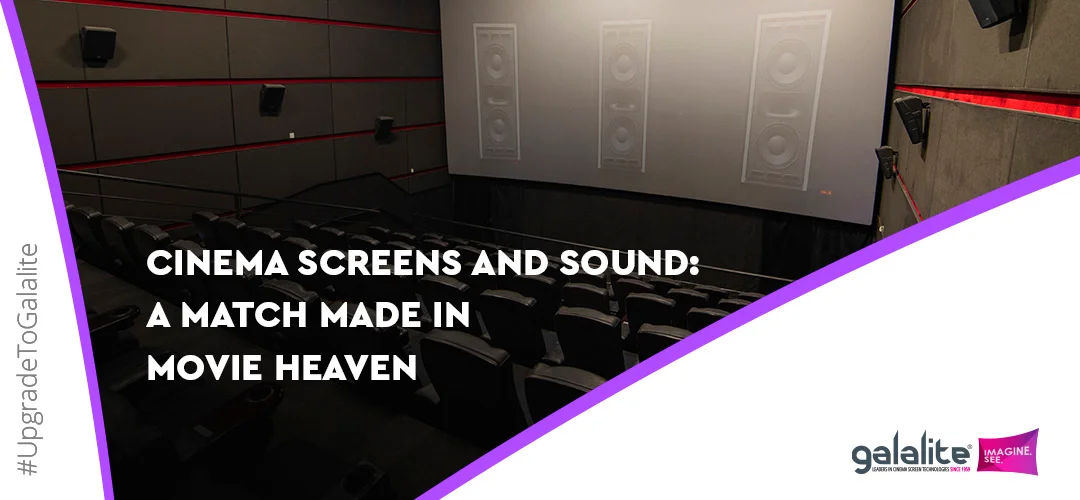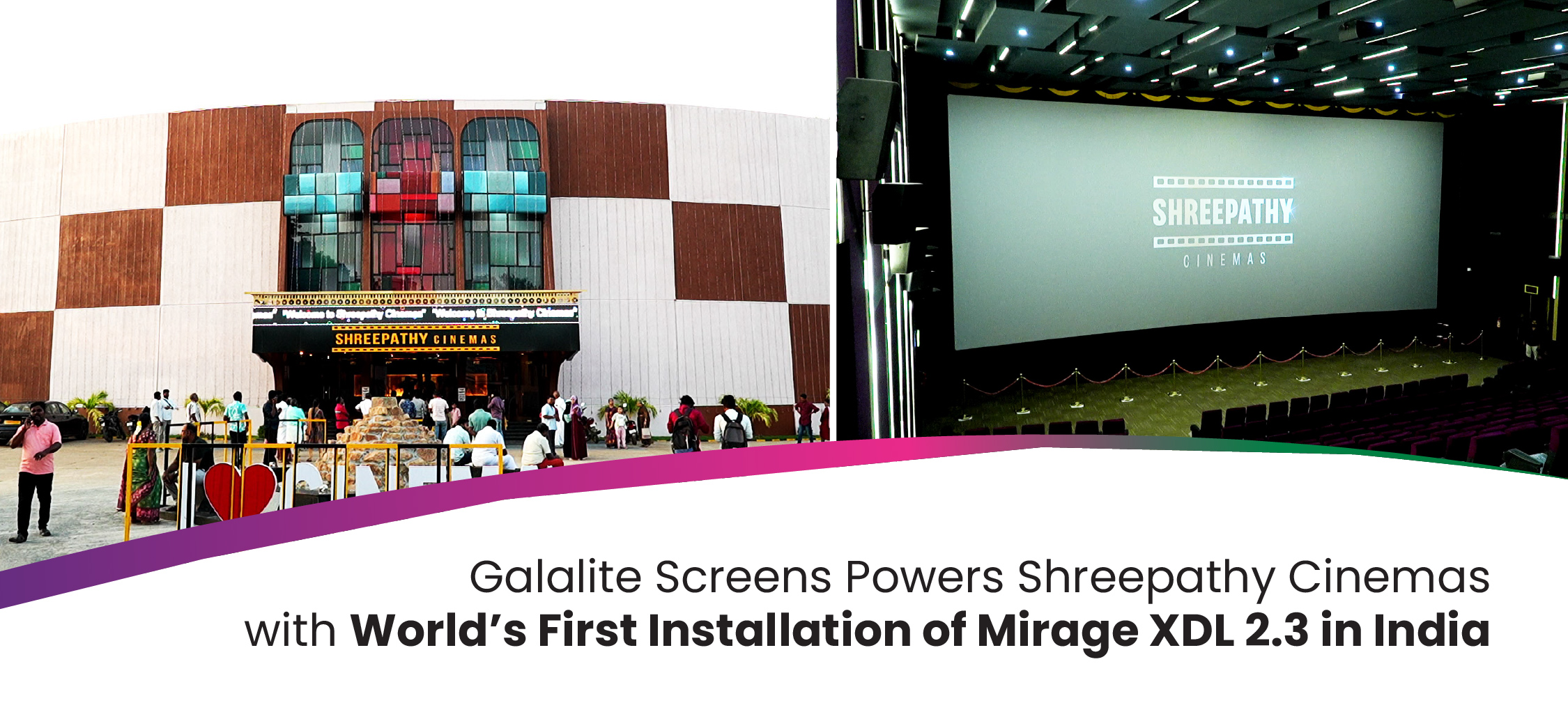
Movie magic happens when images on the big screen come alive with sound. This blog explores the crucial relationship between cinema screens and speaker systems that draw audiences into immersive cinematic worlds.
Like dancers in perfect sync, screens and sound work in harmony. Visual splendor on screens pulls us into narratives, while speaker systems immerse us with multi-dimensional audio. From subtle background cues to heart-pounding musical swells, quality sound design transforms movies from seen to experienced.
Together, cinema screens and audio technology enter our senses and emotions. They collaborate to tell stories that make us laugh, cry, and perch on the edge of our seats.
We’ll explore innovations that enhance this duo to hook movie lovers further. For any cinema fan, this blog offers insider insight into the captivating synergy between what you see and hear.
Why Timing Matters: Syncing Up Screens and Sounds
Timing is everything when syncing up what you see on screen with what you hear from the speakers. Even minor delays can ruin the movie’s magic.
For the best movie experience, the sights and sounds need to match up flawlessly. We’re talking precision down to the millisecond. When there’s a delay between what you see and hear, it breaks the spell.
Perfect sync pulls you into the story and makes you feel part of the action. It sweeps you up in fictional worlds and makes them feel real. Flawless timing also focuses your attention and amps up engagement. You get lost in the narrative when the visuals and audio work harmoniously.
But if the timing’s off even a little? The illusion shatters. The storytelling impact suffers, and viewers mentally check out. So, precise sync is crucial for both immersive plots and engaged audiences.
Here are some specific ways synchronization enhances the cinematic experience:
- It helps build suspense and punctuate critical moments. The timing directly shapes story pacing.
- It makes emotional moments land with maximum punch. You feel each laugh and tear more deeply.
- It tricks your senses and keeps you immersed in the fictional dream. No distractions.
- It sets the rhythm of scenes just right for optimal viewer engagement.
Flawless sync takes meticulous work behind the scenes. But the audience feels a seamless experience that transports them. When screens and speakers dance in perfect time, the magic happens.
Built-In Movie Sound: Integrating Screens and Speakers
Watching movies on today’s high-tech cinema screens is a fully immersive audiovisual experience. Many of the latest screen systems have matched sound systems discreetly built right in.
Rather than sticking speakers around a screen, the ideal set-up physically integrates them into the structure. You may not even see the speakers, but you’ll hear them.
This integrated design creates seamless movie magic. The sound seems to emit directly from the images you’re watching. Voices, sound effects, and music flow from the characters and action on-screen.
Built-in speakers boost the audio clarity, range, and sense of realism. No matter where you sit in the theater, you’ll catch every line of dialogue. Explosions will rumble your feelings. Delicate background sounds will enhance the ambiance.
With integrated audio, the speakers disappear into the experience. There’s no distracting separate sound system. Just flawless sights and sounds working as one to immerse you in cinematic worlds. The audio matches the scale and impact of the big-screen visuals.
It’s a full sensory experience for both your eyes and ears. You don’t just watch movies on today’s screens – you feel immersed in them.
How Sound Design Transports You into Movies
Sound brings movies to life unlike anything else. While visuals like CGI and special effects are dazzling, audio creates a rich atmosphere that immerses audiences.
Skillful sound design places you right into the movie’s world. It fills out environments, both real and imagined.
Let’s look at some examples:
- In sci-fi films, layers of humming engines, beeping controls, and alien noises make spaceship and futuristic settings tangible.
- In nature documentaries, regional bird calls and rustling leaves surround you in exotic jungle or forest locales.
- In thrillers, amplified heartbeat sound effects and footsteps build tense, chilling moods.
- In dramas, muffled crowd noise and music transport you to bustling city scenes.
But sound design isn’t all loud explosions. Subtle, textured audio moments also pull you in:
- Creaking floors and rustling curtains make sets more lifelike.
- Gentle wind and water flows evoke serene countryside.
- The ambient hum of an office fills out that workspace.
These delicate touches add ear-catching realism. As one sound editor explained, they “transport you into the picture” in a way visuals alone can’t.
Next time you watch a movie, notice how the audio landscapes you in new worlds. Sound takes you places.
Sound That Moves You: Audio Design’s Emotional Power
While movie visuals provide the action, sound creates the feeling. Skillful audio design gives films their emotional heartbeat. Sound can make us laugh, cry, or cower in suspense. Let’s explore some examples of how it generates feeling:
Music Scores Set the Mood
Remember the iconic swelling piano melody when Mufasa dies in “The Lion King”? Those mournful notes made the scene even more tragic. Uplifting music similarly amplifies feel-good moments. Score guides our emotions.
Contrast that to the chilling silence during the air duct scene in “Alien.” No music built nail-biting tension.
Sound Effects Heighten Reactions
When fight scene punches are accentuated with loud cracks and crunches, we viscerally cringe.
In horror films, amplified heartbeat sound effects pulsating through dark scenes elicit dread. We intimately feel the characters’ fear and anxiety.
Even small sounds like footsteps are given echo effects to maximize tension.
Texture Creates Moods
Beyond big sound effects, textured audio details also shine:
- Creaking floors and howling wind set creepy moods.
- Peaceful chirping birds and rustling leaves evoke tranquility.
These subtle touches draw us into movie worlds on an emotional level.
In all cases, layered sounds complement visuals to steer our emotional journeys. They build intimate connections between audiences and on-screen characters.
Bringing Movies to Life: The Screen and Sound Duo
As we’ve explored, cinema screens and speaker systems work in perfect harmony to create immersive worlds. Their symbiotic relationship transports audiences into cinematic experiences that make us laugh, cry, and sit on the edge of our seats.
Visual splendor on the screen means little without complementary audio design enveloping our senses. When images and sounds dance in flawless unison, movie magic happens. This is why precision and integration are so important.
Companies like Galalite recognize this crucial audiovisual connection. They engineer cinema solutions to optimize the relationship, captivating film fans and enhancing storytelling. The symbiosis of screens and speakers brings movies to life unlike anything else.
So next time you sit enthralled in a theater, appreciate the technical wizardry syncing up sights and sounds. They work together to trick our senses and unlock our emotions. Without this harmony, movies would not have such power to move us.
FAQ’s
How do cinema screens and sound work together?
Cinema screens reflect high-quality visuals, while surround sound enhances immersion, creating a synchronized and captivating movie experience.
Why is sound important in a cinema experience?
Sound adds depth, emotion, and realism to films, making the audience feel fully immersed in the story and on-screen action.
How does screen technology impact audio quality?
Acoustically transparent screens allow sound to pass through without distortion, ensuring clear and synchronized audio directly from the source.
What role do acoustically transparent screens play in cinemas?
These screens enable speakers to be placed behind them, creating a more natural and immersive audio experience without compromising visual quality.
How can cinema technology enhance both audio and visuals?
Advanced screen materials and surround sound systems work together to deliver stunning picture quality and rich, immersive soundscapes.
Related articles



